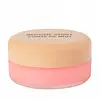What's inside
What's inside
 Key Ingredients
Key Ingredients

 Benefits
Benefits

 Concerns
Concerns

 Ingredients Side-by-side
Ingredients Side-by-side

Diisostearyl Malate
EmollientHydrogenated Polyisobutene
EmollientBis-Behenyl/Isostearyl/Phytosteryl Dimer Dilinoleyl Dimer Dilinoleate
EmollientParaffinum Liquidum
EmollientPolyisobutene
Paraffin
PerfumingCopernicia Cerifera Wax
Synthetic Wax
AbrasiveMicrocrystalline Wax
Emulsion StabilisingPhenoxyethanol
PreservativeEthylene/Propylene/Styrene Copolymer
Butyrospermum Parkii Butter
Skin ConditioningEthylhexylglycerin
Skin ConditioningSimmondsia Chinensis Seed Oil
EmollientTocopheryl Acetate
AntioxidantDiethylhexyl Syringylidenemalonate
Skin ProtectingParfum
MaskingButylene/Ethylene/Styrene Copolymer
Tocopherol
AntioxidantCaprylic/Capric Triglyceride
MaskingCitric Acid
BufferingPentaerythrityl Tetra-Di-T-Butyl Hydroxyhydrocinnamate
AntioxidantLimonene
PerfumingCI 15850
Cosmetic ColorantCI 19140
Cosmetic ColorantCI 77891
Cosmetic ColorantDiisostearyl Malate, Hydrogenated Polyisobutene, Bis-Behenyl/Isostearyl/Phytosteryl Dimer Dilinoleyl Dimer Dilinoleate, Paraffinum Liquidum, Polyisobutene, Paraffin, Copernicia Cerifera Wax, Synthetic Wax, Microcrystalline Wax, Phenoxyethanol, Ethylene/Propylene/Styrene Copolymer, Butyrospermum Parkii Butter, Ethylhexylglycerin, Simmondsia Chinensis Seed Oil, Tocopheryl Acetate, Diethylhexyl Syringylidenemalonate, Parfum, Butylene/Ethylene/Styrene Copolymer, Tocopherol, Caprylic/Capric Triglyceride, Citric Acid, Pentaerythrityl Tetra-Di-T-Butyl Hydroxyhydrocinnamate, Limonene, CI 15850, CI 19140, CI 77891
 Reviews
Reviews

Ingredients Explained
These ingredients are found in both products.
Ingredients higher up in an ingredient list are typically present in a larger amount.
Citric Acid is an alpha hydroxy acid (AHA) naturally found in citrus fruits like oranges, lemons, and limes.
Like other AHAs, citric acid can exfoliate skin by breaking down the bonds that hold dead skin cells together. This helps reveal smoother and brighter skin underneath.
However, this exfoliating effect only happens at high concentrations (20%) which can be hard to find in cosmetic products.
Due to this, citric acid is usually included in small amounts as a pH adjuster. This helps keep products slightly more acidic and compatible with skin's natural pH.
In skincare formulas, citric acid can:
While it can provide some skin benefits, research shows lactic acid and glycolic acid are generally more effective and less irritating exfoliants.
Most citric acid used in skincare today is made by fermenting sugars (usually from molasses). This synthetic version is identical to the natural citrus form but easier to stabilize and use in formulations.
Read more about some other popular AHA's here:
Learn more about Citric AcidEthylhexylglycerin (we can't pronounce this either) is commonly used as a preservative and skin softener. It is derived from glyceryl.
You might see Ethylhexylglycerin often paired with other preservatives such as phenoxyethanol. Ethylhexylglycerin has been found to increase the effectiveness of these other preservatives.
Phenoxyethanol is a preservative that has germicide, antimicrobial, and aromatic properties. Studies show that phenoxyethanol can prevent microbial growth. By itself, it has a scent that is similar to that of a rose.
It's often used in formulations along with Caprylyl Glycol to preserve the shelf life of products.